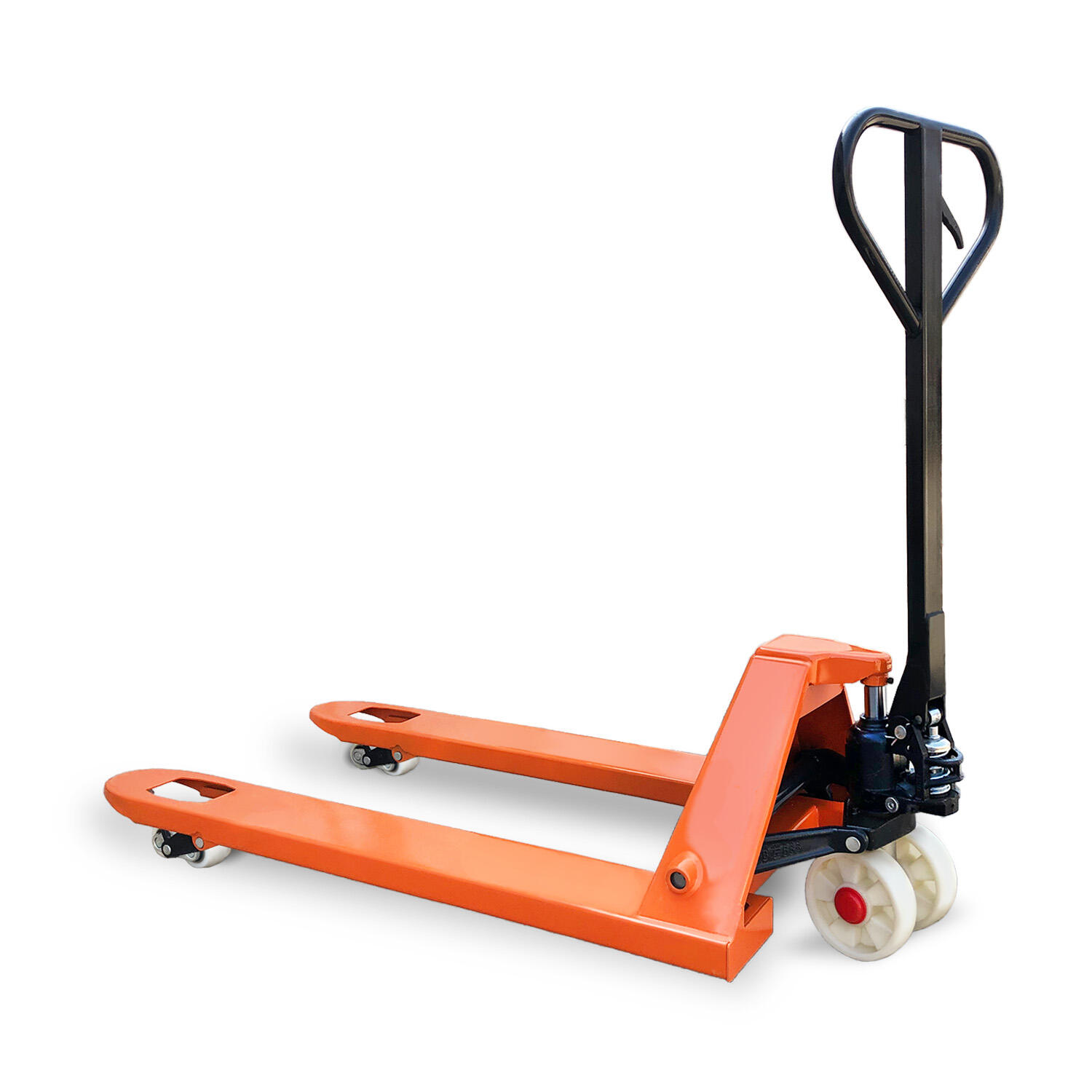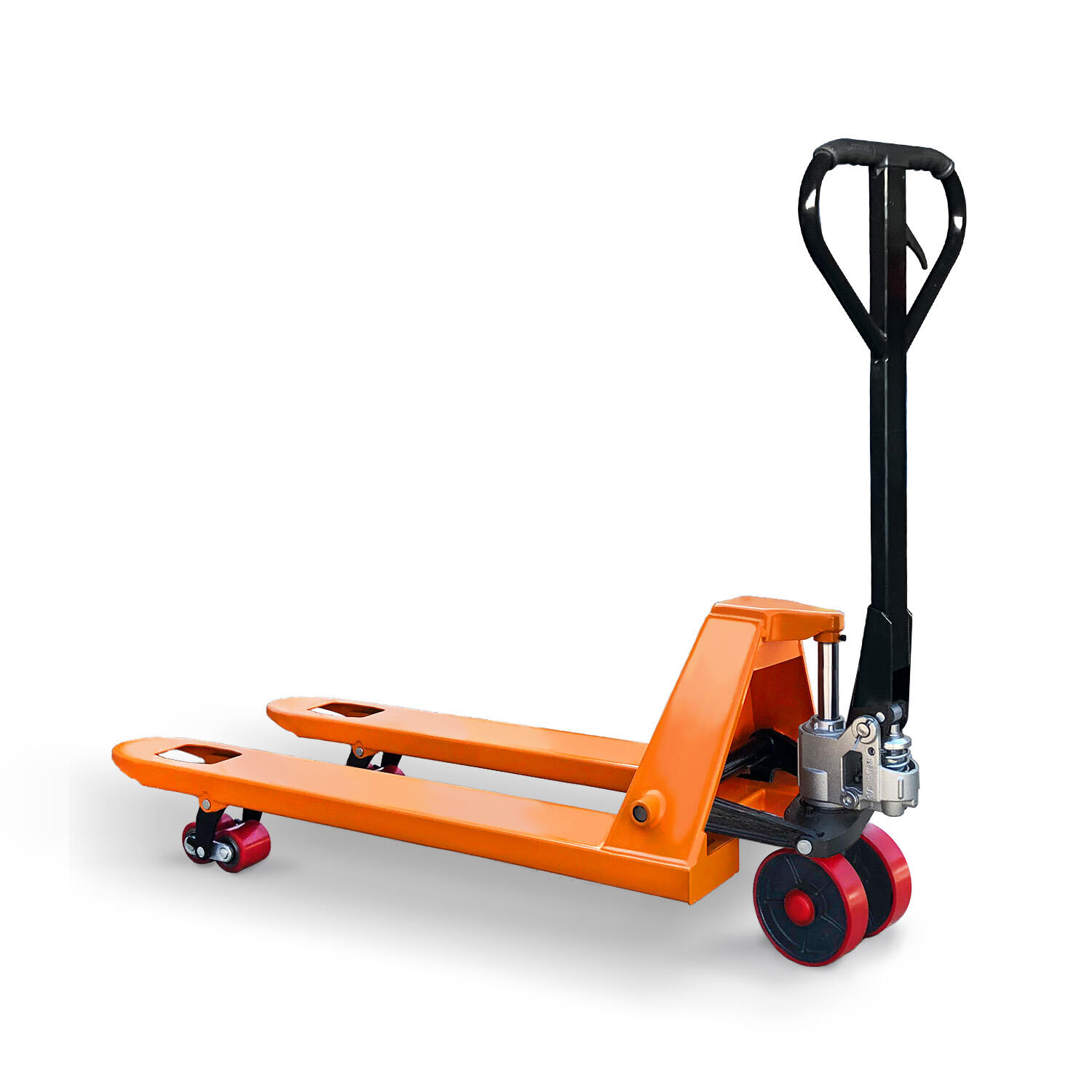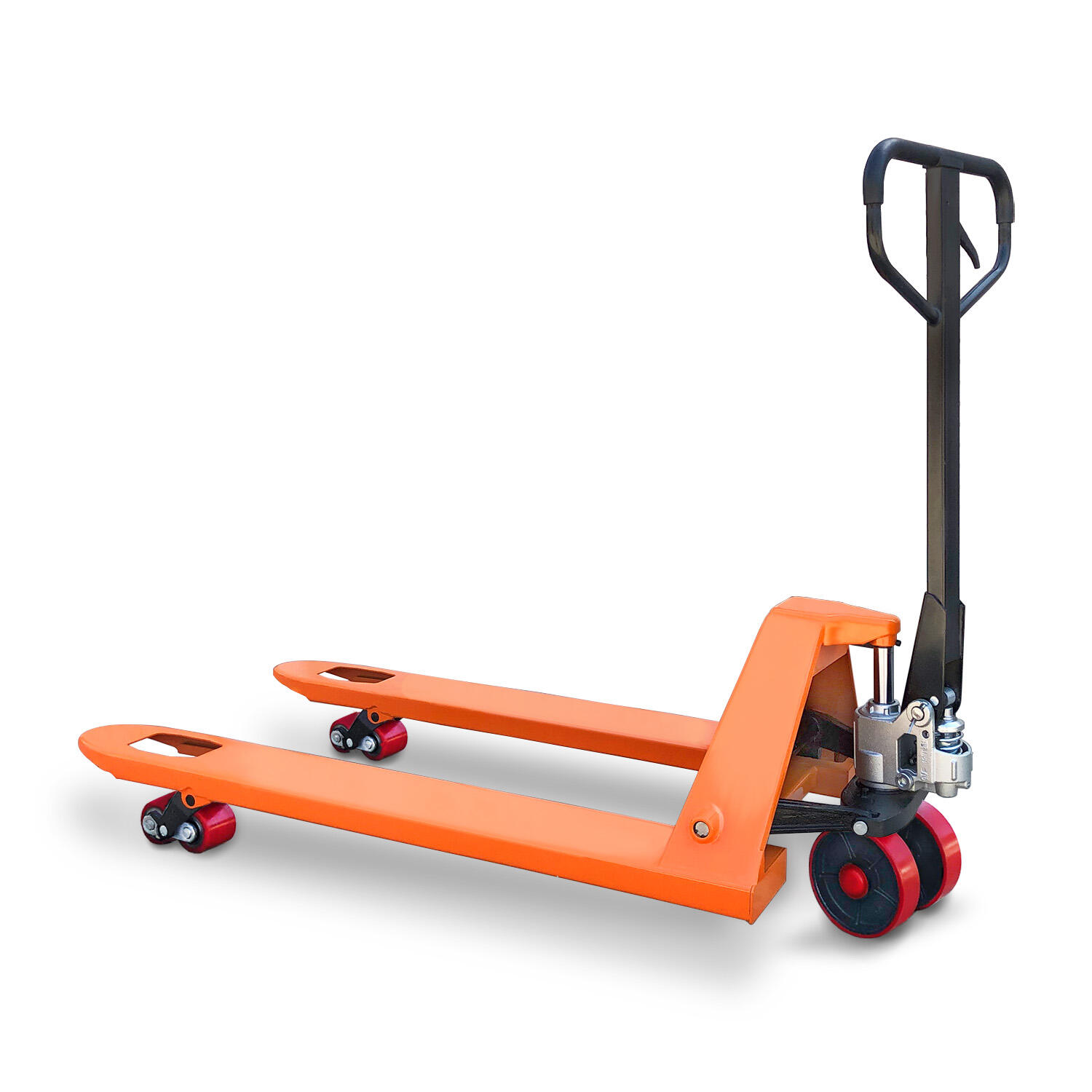Un carrello manuale per pallet è un dispositivo pratico ed efficiente progettato per il sollevamento e il trasporto manuale dei pallet, rappresentando un elemento fondamentale nelle operazioni di movimentazione delle merci in numerosi settori industriali. Il suo design privilegia la semplicità e la funzionalità, rendendolo una scelta ideale per aziende che necessitano di uno strumento affidabile senza la complessità dei sistemi automatizzati. Realizzato con materiali di alta qualità, che includono generalmente acciaio spesso per il telaio e i bracci, questo equipaggiamento è costruito per resistere a carichi pesanti e all'uso frequente, garantendo una lunga durata anche in ambienti lavorativi difficili come impianti di produzione, cantieri edili e centri di stoccaggio. Il funzionamento manuale del carrello manuale per pallet rappresenta una delle sue caratteristiche più evidenti. Si basa su un sistema a manovella o a leva che permette agli operatori di sollevare i pallet applicando forza fisica, eliminando la necessità di energia elettrica, batterie o potenza idraulica in alcuni casi. Questo lo rende estremamente versatile, poiché può essere utilizzato in aree dove le fonti di alimentazione sono limitate o non accessibili, come zone di carico esterne o siti remoti. Inoltre, la natura manuale del dispositivo implica un numero ridotto di componenti mobili, riducendo il rischio di guasti meccanici e semplificando le procedure di manutenzione. L'ergonomia è un aspetto chiave nella progettazione del carrello manuale per pallet. La maniglia è sagomata per adattarsi comodamente alla mano dell'operatore, con una presa antiscivolo che garantisce stabilità durante l'utilizzo. La posizione della maniglia è inoltre ottimizzata per ridurre lo sforzo necessario per sollevare e spostare i carichi, diminuendo la fatica su schiena, spalle e braccia. Questo design ergonomico non solo migliora il comfort dell'operatore ma aumenta anche la produttività, poiché i lavoratori possono eseguire le attività in modo più efficiente senza subire affaticamento eccessivo. La capacità di sollevamento del carrello manuale per pallet varia a seconda del modello, ma la maggior parte è in grado di gestire carichi compresi tra 1000 kg e 3000 kg, risultando quindi adatto a una vasta gamma di merci pallettizzate, inclusi scatoloni, casse e materiali sfusi. Il meccanismo di sollevamento è progettato per fornire movimenti fluidi e controllati, permettendo agli operatori di alzare i pallet fino all'altezza desiderata con precisione. Questo è particolarmente utile durante il caricamento o lo scaricamento dei pallet dai camion, l'allineamento con gli scaffali di stoccaggio o il trasferimento delle merci tra diverse aree dello stabilimento. La mobilità rappresenta un altro vantaggio del carrello manuale per pallet. Dotato di ruote robuste, spesso realizzate in gomma o poliuretano, si muove facilmente su diverse superfici, tra cui cemento, ghiaia e asfalto. Le ruote sono generalmente montate su castelli girevoli, consentendo svolte strette e una facile manovrabilità in spazi ristretti, come corridoi stretti nei magazzini o banchine di carico affollate. Alcuni modelli dispongono anche di freni sulle ruote per mantenere il dispositivo fermo quando non è in uso, prevenendo movimenti accidentali e garantendo sicurezza durante le operazioni di carico e scarico. La manutenzione del carrello manuale per pallet è semplice ed economica. Pulizie regolari per rimuovere sporco e detriti, lubrificazione delle parti mobili come cerniere e cuscinetti delle ruote, e ispezione del meccanismo di sollevamento per individuare eventuali segni di usura sono sufficienti per mantenere il dispositivo in buone condizioni operative. A differenza di attrezzature più complesse, non è necessario disporre di strumenti specializzati o formazione specifica per effettuare queste operazioni di manutenzione, rendendole accessibili al personale interno e riducendo i tempi di inattività. Per quanto riguarda le applicazioni, il carrello manuale per pallet è abbastanza versatile da essere utilizzato in diversi ambienti. Nei magazzini, semplifica il processo di organizzazione e spostamento delle scorte, permettendo ai lavoratori di riordinare rapidamente i pallet. Negli ambienti commerciali, facilita il ripristino degli scaffali e lo spostamento delle merci dalle aree di stoccaggio ai punti vendita. Nel settore edile, può trasportare materiali da costruzione come mattoni, legname e utensili lungo i cantieri. Anche le sue dimensioni compatte lo rendono adatto all'uso in piccole imprese dove lo spazio è limitato, poiché può essere riposto facilmente quando non viene utilizzato. Nel complesso, il carrello manuale per pallet è un asset essenziale per qualsiasi azienda coinvolta nella movimentazione delle merci. La sua durata, la facilità d'uso, il design ergonomico e le ridotte esigenze di manutenzione lo rendono una soluzione economica capace di migliorare l'efficienza operativa e la sicurezza. Che venga utilizzato in un grande impianto industriale o in un piccolo negozio al dettaglio, si rivela uno strumento indispensabile per semplificare il sollevamento e il trasporto di pallet pesanti.


